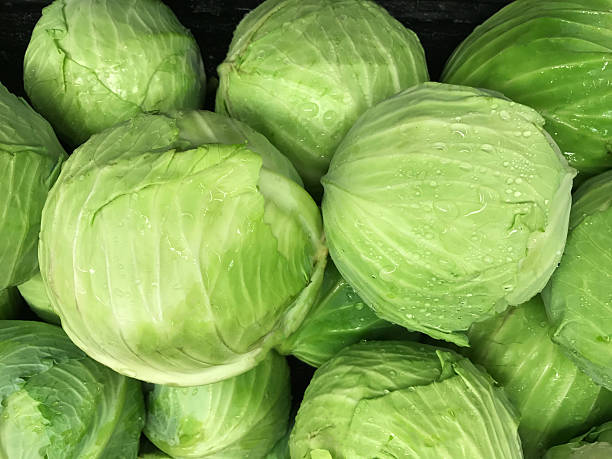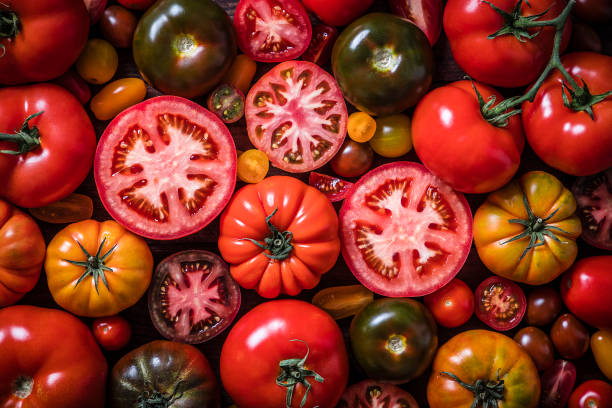The OSU Extension Fruit & Vegetable Report is written/published collectively by OSU Extension staff across the state.

Biological Soil Health
When it comes to supporting healthy soils, the physical and chemical aspects of soil quality are often highlighted. However, the importance of biological activity and diversity, and how it influences soil structure and chemical properties (pH, electrical conductivity, etc.), is becoming increasingly appreciated in modern farming. As we discover more about the different microbe-microbe and microbe-plant interactions unfolding in the soil habitat, we can create better farming practices that optimize crop health and soil quality.

Three areas of soil health: physical, chemical, and biological. Image courtesy of University of Massachusetts.
The source of and final destination of all soil life is soil organic matter (SOM). SOM consists of biological material in the soil, derived from plants, fungi, animals, and other organisms, that are in various stages of decomposition. Certain forms of SOM break down quickly and provide nutrients for crop use, others are more stable (i.e. inaccessible to microbial decay) and contribute to aggregate stability and tilth. A SOM content of 5% in mineral soils is considered high; in muck soils, SOM can be as high as 80%. Conservation ag practices like reduced tillage and cover cropping are used to support high levels of SOM for improved nutrient cycling, soil structure, and cation exchange capacity.
The food webs that produce SOM are characterized by an astonishing diversity of soil life made up of bacteria, fungi, archaea, nematodes, protozoa, and other microfauna, as well as the larger organisms like springtails and earthworms higher up the food chain. These organisms not only drive nutrient cycling through consuming and contributing to SOM, but can influence crop health through more specialized relationships. Plant-growth promoting rhizobacteria that interact with plant roots can boost crop productivity by producing hormones, fixing atmospheric N, solubilizing P for increased availability, and inducing plant resistance to pathogens. The growing biologicals industry (biopesticides, biofertilizers, and biostimulants) is based on the premise that certain organisms benefit crop health through either direct interactions or interactions with other soil life.
Keeping in mind how soil biodiversity and activity affect soil health through the lens of SOM and interactions between organisms can help us make decisions that support crops by maintaining a thriving, balanced soil habitat.



Examples of soil organisms at different scales – Microfauna: Azospirillium soil bacteria (top), Mesofauna: tardigrade (middle), Macrofauna: earthworm (bottom). Photos courtesy of Science Source (top), National Geographic (middle), Dan Brekke – Flickr (bottom).
Crop Updates
Vegetables
Cucurbits
Plectosporium leaf blight is being detected. Continue to watch for aphids, cucumber beetles and squash bugs. Significant damage was detected within the last week in harvested pumpkins due to large populations of cucumber beetles. Aphids can still be found in green foliage, and may be spotted via large accumulations of honey dew beneath healthy foliage.

Cucumber beetles feeding on harvested pumpkins. Photo by Frank Becker, OSU Extension.
Cole Crops
Alternaria leaf spot is being observed in brassicas. This pathogen is supported by warm, wet conditions. Cultural practices for reducing alternaria pressure include increasing crop spacing for improved airflow, crop rotation, tilling under crop residue after harvest and controlling brassica weeds (shepherd’s purse, wild mustard, wild radish, yellow rocket, etc.) to decrease disease inoculum. Treating seed with hot water prior to planting may also help to decrease prevalence of this seed-borne pathogen. Consult the Midwest Vegetable Guide for fungicide options in Brassicas.
Tomatoes/Peppers
Hoop house tomatoes are nearing the end. Powdery mildew, bacterial diseases, aphids, and other pests are all being observed under plastic. Late blight and early blight are prevalent in remaining field tomatoes.
Anthracnose is continuing to be an issue on peppers and tomatoes. Infested fruits rapidly decline in quality and are unmarketable. Lesions are typically observed as sunken, round lesions on the fruit. At times you may also be able to see the salmon colored spores within the lesion on the fruit.

Anthracnose on peppers. Photo by Frank Becker, OSU Extension.
Fruit
Many orchards are nearing completion of harvest and pest monitoring traps are being taken down for the season. As tree fruits are harvested and leaves begin to fall, it may be a good opportunity to take a closer look at your trees and scout the trunk and branches for presence or evidence of insect pests such as scale and borers. Scouting for these pests now can help you make adjustments to your integrated pest management program.
October Small Fruit Updates
Dr. Gary Gao, Professor and Small Fruit Specialist, CFAES South Centers. The Ohio State University
Update on Long Cane Raspberry Project:
We are only getting a few straggling raspberries from our long cane raspberry trial at OSU South Centers in Piketon during the week of October 6, 2023. There were only enough for Gary to snack on. Pictured in the first photo is Kweli®. As you can tell from the picture, fruit color is still looking quite nice. Kweli® is an everbearing variety that is capable of producing two crops inside a high tunnel and out in the open field. Follow this link for more information on the variety: https://www.abbreeding.nl/varieties/kweli/?lang=en
We are still fine-tuning the method of growing long cane Kweli®. We just wrapped up our 2021-2023 Specialty Crop Block Grant (SCBG) funded by Ohio Department of Agriculture (ODA). There is a lot more to learn about this highly innovative production method. Fortunately, we received another SCBG from ODA to do just that!

Kweli® fruits. Photo by Dr. Gary Gao, The Ohio State University.
Gary was able to find several Tulameen raspberries from our long cane raspberry trial plot. This is definitely too late for the Tulameen harvest since it is a summer-bearing variety which does not produce fruits on primocanes. It was still neat to check them out. Earlier in the season, we harvested a lot of beautiful Tulameen fruits. Some of our grower cooperators were able to sell them for $9 per pint in a Columbus farmer’s market. Raspberry bushes in a long cane production system can produce 22,000 lbs. per acre! Tulameen is well suited for long cane raspberry production and is well known for its large fruit size and excellent taste! Follow this link – https://www.researchgate.net/publication/292928034_’Tulameen’_red_raspberry – for more information on Tulameen variety.

Tulameen fruits picked in October from our long cane raspberry trial. Photo by Dr. Gary Gao, The Ohio State University.
Late Leaf Rust on Raspberries:
Gary noticed that some of the raspberry bushes in their raspberry trial had late leaf rust. Late leaf rust on raspberry is a fungal disease. Follow link – https://ohioline.osu.edu/factsheet/plpath-fru-17#:~:text=Late%20leaf%20rust%20is%20caused,rust%20fungus%20is%20not%20systemic. -for more information on symptoms and management of this disease. Do not confuse this disease with orange rust of brambles. Fortunately, red raspberries are resistant to orange rust.

Late leaf rust on raspberries. Photo by Dr. Gary Gao, The Ohio State University.
Fall is for Figs in Ohio!
Even though fall is typically for apples, mums, and pumpkins, it is also for figs – well hardy figs for that matter. Gary has been picking hardy figs from their fig planting at OSU South Centers in Piketon from early September to now. The figs will keep ripening until frost. A high tunnel will extend the harvest season. Our figs were from another Ohio Specialty Crop Block Grant funded by ODA a few years ago. The varieties in our trial are Brown Turkey, Hardy Chicago, and Olympian. Brown Turkey and Chicago Hardy performed the best in our trial. Follow this link https://ohioline.osu.edu/factsheet/hyg-1439 for more information.

OSU hardy fig trial. Photo by Dr. Gary Gao, The Ohio State University.

Brown Turkey figs from the hardy fig trial at OSU South Centers in Piketon. Photo by Dr. Gary Gao, The Ohio State University.
Berry Production Workshops Presented by OSU Extension in Medina County
I will be going to Medina County on Friday, October 27 to give two talks, one on blueberries and one on raspberries. Ms. Ashley Kulhanek, the Ag. and Natural Resource Educator, is organizing the program. I will show gardeners and growers how to grow blueberries and raspberries. Please call OSU Extension in Medina County at 330-725-4911 for more information and to RSVP!
–
This is our last bi-weekly report for the 2023 season. Thank you for reading and please feel free to direct any feedback on the report series to Chris Galbraith at galbraith.108@osu.edu.
Upcoming Events
December 5 – 7, Grand Rapids, MI, Great Lakes Fruit, Vegetable, & Farm Market Expo
January 15 – 16, Columbus, OH, 2024 Ohio Produce Network
February 15 – 17, Newark, OH, 2024 Ohio Ecological Food and Farm Association (OEFFA) Conference


















































